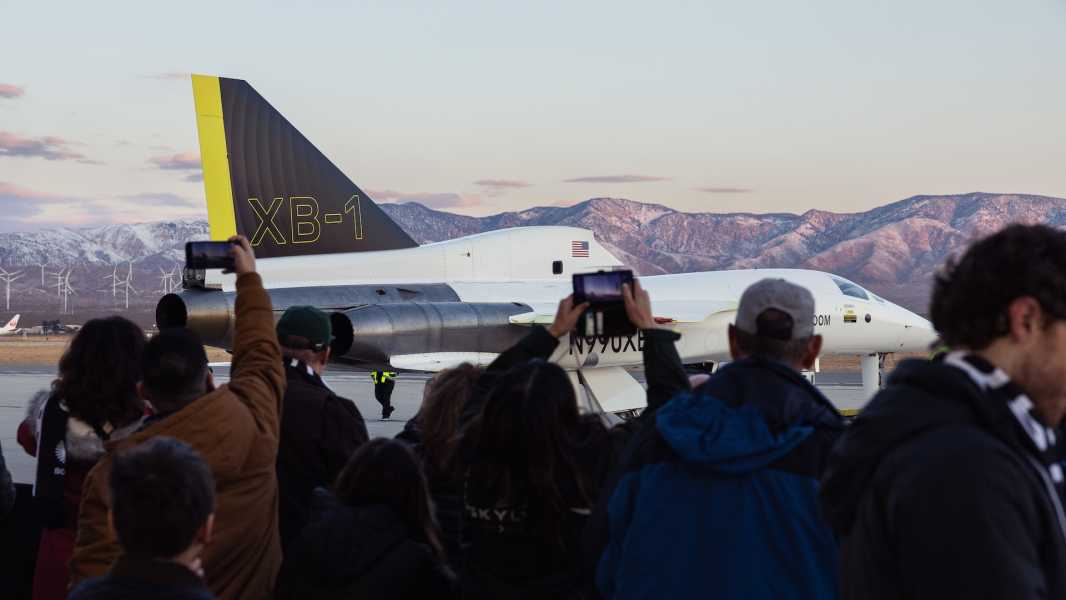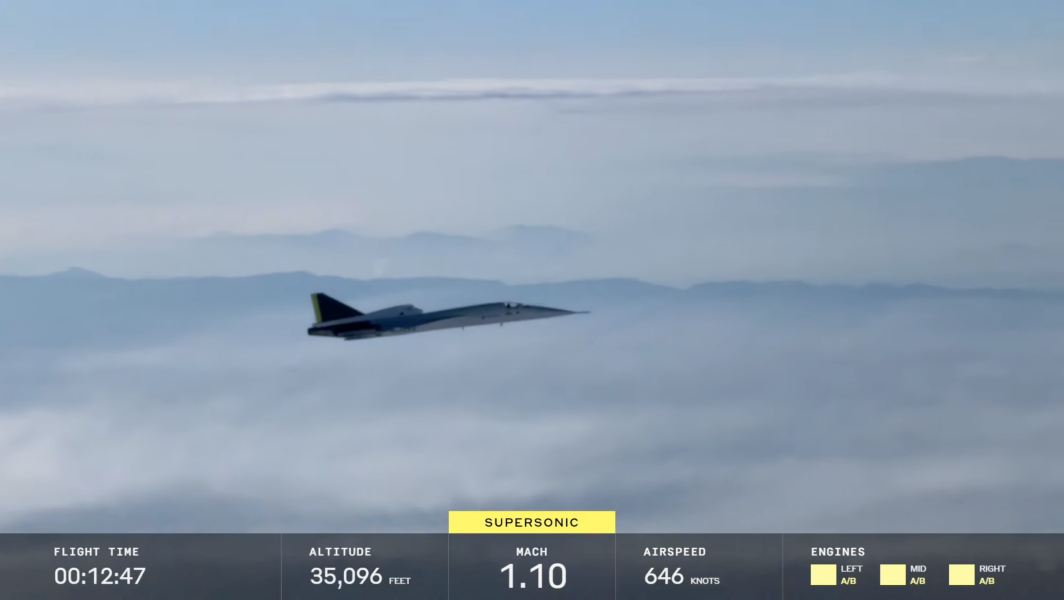
An image of the XB-1 aircraft that has just broken the sound barrier. (Photo courtesy of Boom Supersonic)
The Boom Supersonic XB-1 successfully broke the sound barrier, becoming the first supersonic civilian aircraft in the history of the United States.
The XB-1 took off from Mojave Air and Space Port in California today (January 28) and reached a speed of Mach 1.1 – equivalent to 1.1 times the speed of sound, or 844 mph (1,358 km/h). It achieved this record speed three times during its 34-minute test flight.
Boom Supersonic became the first independent company to break the sound barrier with an aircraft designed for civilian use. (Concorde was developed in cooperation with the British and French governments, and the Tu-144 was designed and built with support from the Soviet government.)
During the initial phase of the flight, the aircraft climbed to 34,000 feet (10,300 meters) in just a few minutes, demonstrating its ability to make sharp climbs. It then completed several subsonic checks, making safety measurements similar to those performed in previous XB-1 tests.
The plane then accelerated to supersonic speed. Once it reached Mach 1.1, engineers remotely activated the “flutter induction system” to test the airflow around the plane and ensure it did not negatively impact the integrity of the fuselage. The plane then performed maneuvers to test its handling and performance at high speed, and tested its “hands-off” behavior.
The XB-1 has a streamlined shape and a downturned nose that reduces wave drag and airflow, thereby providing stability and preventing damage.
The XB-1 maintained its record speed for only a few minutes, as the Boom Supersonic was only granted permission to use a limited area of airspace.
From San Francisco to Tokyo in 6 hours

During the test flight, the Boom Supersonic reached a top speed of Mach 1.1, maintaining it for several minutes at an altitude of 35,000 feet.
The successful test flight, which was broadcast live by Boom Supersonic, demonstrated the effectiveness of a number of internal technologies. In addition to the Symphony’s three engines, the XB-1 is equipped with two cameras on the landing gear that give pilots a clear view of the runway, thereby eliminating the need for a movable “nose-down” like Concorde. All flight characteristics were carefully measured by ground crews.
“We just collected some really valuable data, and I'm looking forward to analyzing it,” Nick Scherica, XB-1 chief flight test engineer, said during the livestream.
Sourse: www.livescience.com





